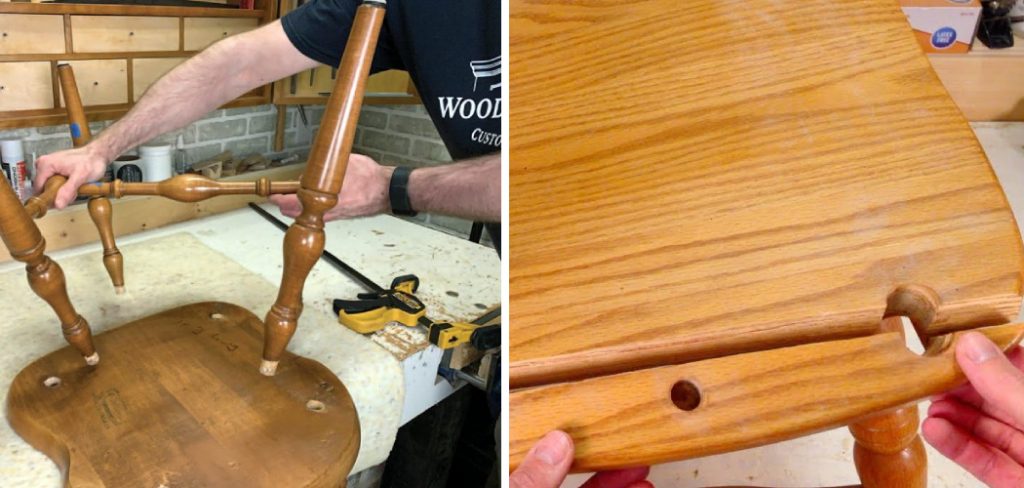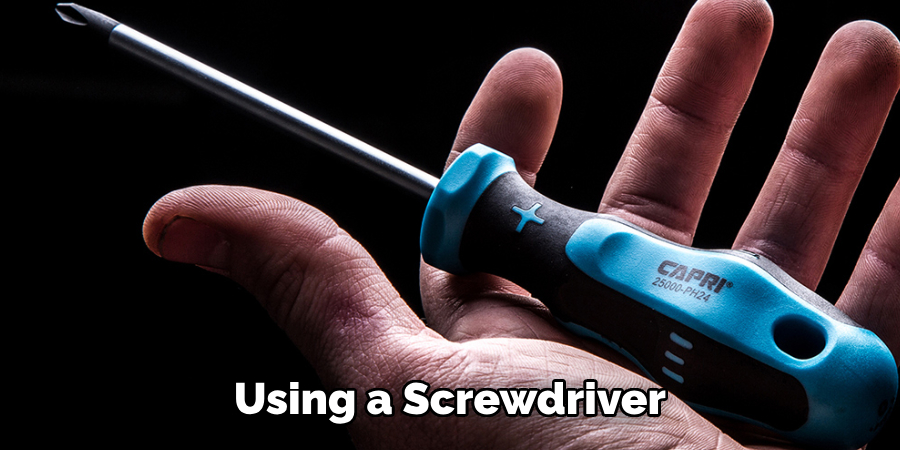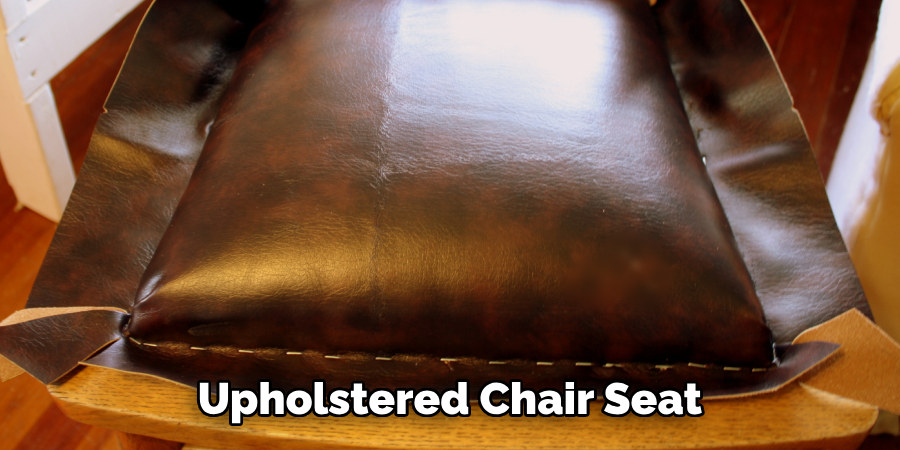Are you the proud owner of a chair that isn’t quite sitting right? Maybe it’s sagging, creaking or wobbling and in dire need of repair. Don’t despair — fixing a chair seat can be surprisingly easy with just a few simple tools! This blog post will give you step-by-step instructions on how to fix chair seat. With this guide by your side, there’s no reason why you shouldn’t have your chair back looking as good as new in no time!

If you’re anything like me, your furniture has seen better days. That chair my kids have been jumping on never feels quite the same after every session and now I’m looking for a way to repair it without breaking the bank. Don’t worry – there’s a solution! With just a few simple steps, you can fix that saggy seat and keep enjoying your favorite chair in no time.
What Causes Problems in Chair Seat?
1 . Wear and Tear
Furniture takes a beating over time. With every use, chairs are exposed to weight, force, and friction from people sitting on them. Thus the material naturally wears out or weakens. Also, chairs are often dragged across the floor instead of being lifted. This habit increases friction, leading to faster wear and tear. As the chair seat wears out, it can become loose or even break.
2 . Poor Maintenance
Proper maintenance is crucial for all furniture, including chairs. If not taken care of properly, dirt and grime can accumulate in the joints and hinges, causing them to stiffen or rust over time. This leads to problems with the chair seat as it becomes difficult to move and adjust.
3 . Use of Improper Tools
When attempting to fix a chair seat, using improper tools can do more harm than good. For instance, using a screwdriver instead of a wrench may strip the screws or damage the frame of the chair. It is essential to use the correct tools for each specific task.

4 . Damage from Pets or Children
Pets and young children can cause accidental damage to chair seats. Scratching, chewing, or jumping on the seat can lead to cracks, scratches, or tears. Additionally, spills from food and drinks can also cause damage if not cleaned immediately.
5 . Poor Quality Materials
In some cases, the problem with a chair seat may stem from poor quality materials used in its construction. Low-quality wood or metal frames are more likely to break or bend under pressure. Similarly, cheap upholstery material may tear easily and require frequent repairs.
10 Tips on How to Fix Chair Seat
Now that we have identified some of the common causes of problems in chair seats let’s discuss how to fix them.
1 . Tighten Loose Screws and Bolts
If your chair seat is wobbly or uneven, the first thing you should do is check for loose screws and bolts. Use a screwdriver or wrench to tighten them, and this may solve the issue. Also, check for any missing screws or bolts and replace them if necessary.
2 . Replace Broken or Damaged Parts
In case some parts of your chair seat are beyond repair, it’s best to replace them entirely. This includes cracked wood, broken hinges, or torn upholstery. It’s better to invest in new parts than constantly trying to fix an irreparable problem.
3 . Sand and Refinish Wooden Chairs
If your wooden chair seat has become rough or splintered, a simple solution is to sand it down and refinish it. This will not only make the wood smoother but also give it a fresh look.
4 . Repair Tears in Upholstery
Small tears in upholstery can easily be fixed with some needle and thread. Simply stitch up the tear using a strong thread and tie knots at both ends for added strength. For larger tears or holes, you may need to replace the entire piece of fabric.
5 . Lubricate Stiff Joints
If you have trouble adjusting or moving your chair seat, this could be due to stiff joints. Apply some lubricant, such as WD-40 or grease, to the hinges and joints to make them smooth again. This will also prevent rust from developing.

6 . Glue Loose Joints
If the joints of your chair seat are loose, you can use wood glue to fix them. Apply a small amount of glue to the joints and hold them together until it dries. This will strengthen the joints and prevent the seat from wobbling.
7 . Reinforce Weak Spots
For chairs with weak spots or cracks in the frame, you can reinforce them by adding additional support. Use metal brackets or braces to hold together any weak areas and prevent further damage.
8 . Protect from Pets and Children
To avoid future problems with your chair seat, take preventive measures to protect it from pets and children. Cover the seat with a protective fabric or throw when not in use, train pets to stay off furniture, and supervise young children around chairs.
9 . Use High-Quality Materials
If you’re purchasing new parts for your chair seat, invest in high-quality materials that will last longer and withstand wear and tear. This may cost more initially but will save you money in the long run by reducing the need for frequent repairs.
10 . Regular Maintenance
Last but not least, proper maintenance is essential to prevent problems with your chair seat. Regularly clean and check for any loose screws or bolts, lubricate joints as needed, and address any small issues before they become bigger problems. This will ensure that your chair seat stays in good condition for a long time.

A chair seat may seem like a daunting task, but with the right knowledge and tools, it can be easily done at home. By identifying the root cause of the problem and following these tips, you can save money and extend the lifespan of your chairs.
Frequently Asked Question
What Precautions Should You Take Before Fixing a Chair Seat?
Before attempting to fix a chair seat, make sure that you have all the necessary tools and materials. It is also important to ensure that you are following proper safety precautions, such as wearing protective gear like gloves and safety glasses.
How Can I Tell if My Chair Seat Needs to be Fixed?
If your chair feels unstable or wobbly when you sit on it, it may indicate a problem with the seat. Additionally, if the seat is visibly cracked or broken, it will need to be fixed. This will prevent further damage and potential injuries.
What Materials Do I Need to Fix a Chair Seat?
The materials you will need may vary depending on the type of chair and the extent of the damage. However, some common materials include wood glue, screws, nails, sandpaper, and a drill or screwdriver. It is always helpful to have extra pieces of wood or replacement parts on hand in case they are needed.
How Do I Fix a Loose Chair Seat?
To fix a loose chair seat, start by removing it from the frame. Use sandpaper to smooth out any rough edges or splintered areas. Apply wood glue to the joints and then use clamps to hold them together while the glue dries. Once dry, reinforce with screws or nails if necessary. Finally, sand down any excess glue and reattach the seat to the frame.
How Do I Fix a Cracked Chair Seat?
First, remove the damaged piece of wood from the chair seat. Then, cut a new piece of wood to fit the same size and shape as the original. Apply wood glue to both pieces and press them together firmly. If needed, reinforce with screws or nails. Once dry, sand down any excess glue and reattach the seat to the frame.
What Can I Do if My Chair Seat is Beyond Repair?
If your chair seat is beyond repair, it may be time to consider replacing it entirely. This can be done by purchasing a new chair seat or having one custom-made for your chair. Make sure to properly dispose of the old seat and follow any recycling guidelines if applicable.
Can I Fix a Leather or Upholstered Chair Seat?
Yes, you can fix a leather or upholstered chair seat by following similar steps as fixing a wooden chair seat. However, you may need to use specialized materials and techniques for repairing the upholstery. If unsure, it is best to consult a professional furniture repair person.

What Can I Do to Prevent My Chair Seat from Needing Repairs in the Future?
To prevent your chair seat from needing frequent repairs, make sure to regularly check for any signs of damage or wear and tear. Avoid putting excessive weight on the chair and be mindful of how you sit on it. Additionally, routine maintenance such as tightening screws and cleaning off dirt and debris can help prolong the life of your chair seat.
Conclusion
In conclusion, fixing a chair seat can seem like an overwhelming task at first. However, with the right tools and the knowledge from this article, you can have that broken chair looking like new in no time! Whether it’s gluing or re-webbing the seat or simply replacing the padding material, you now have all the tips necessary to make sure that yours is in perfect working order.
Now you know how to fix chair seat! Plus, when it’s all said and done you get to sit back and relax knowing that you did what seemed impossible: you fixed your chair seat without having to take all of its pieces apart. So don’t wait any longer—get to work and enjoy your handiwork in no time!
